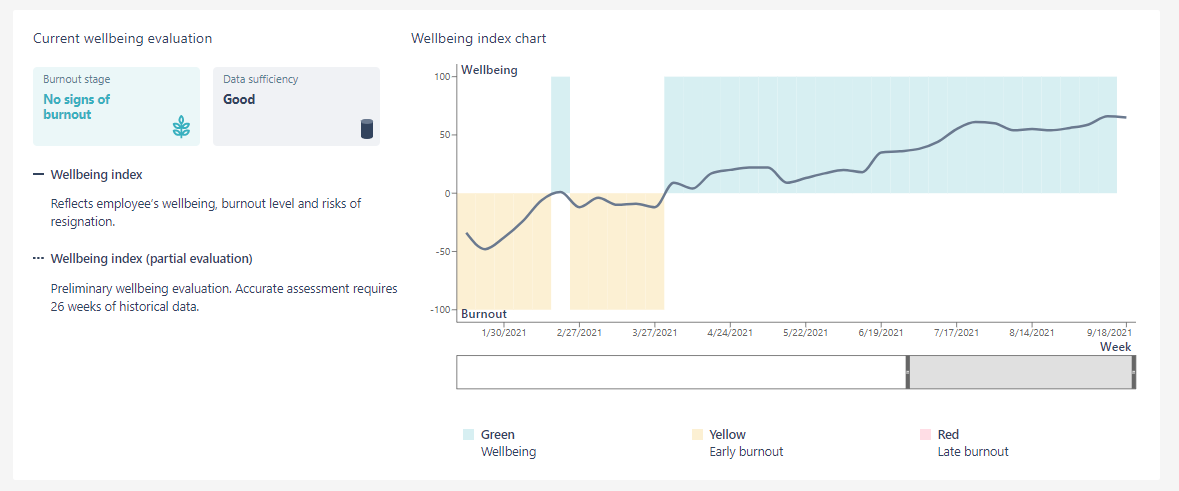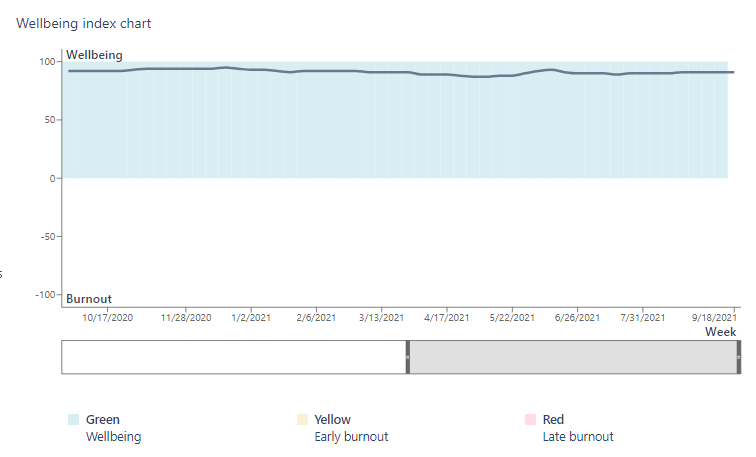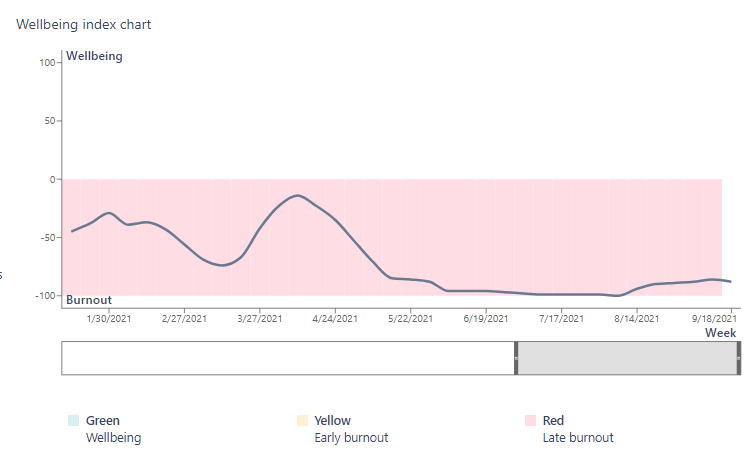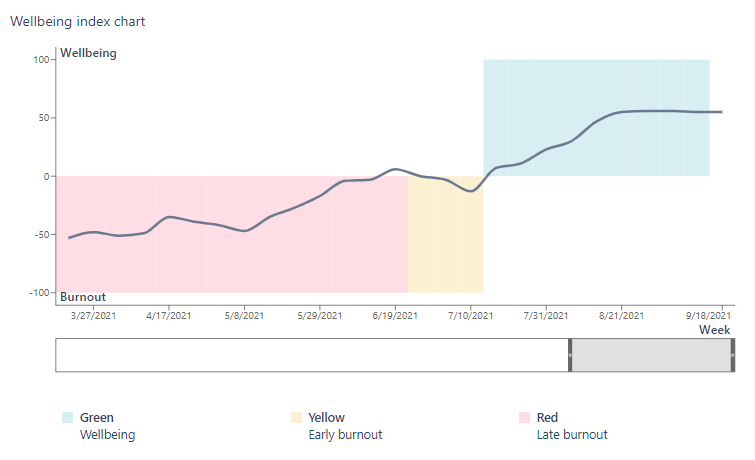Employee wellbeing. Results interpretation
To make the process of interpretation more understandable, we will consider it with specific examples. But first, let's define the concepts that we will use in working with graphs.
For each employee, you have access to a graph of the wellbeing index, which looks like this:

The graph shows:
Yva.ai wellbeing Index
The value of the employee's well-being level is digitized by the model. The model analyzes employee behavior patterns according to 17 communication parameters. Communication patterns are ways or manners or features of people's behavior. That is, the model knows more features of people's behavior in different sources.The chart fill
It shows the fact and duration of the employee's stay at a particular stage of wellbeing or burnout.
The system identifies three zones of wellbeing:
The green zone is the wellbeing of the employee.
The yellow zone is the early burnout, the employee falls into this zone when the Yva.ai wellbeing index is less than 0.
The red zone — is the late burnout, it can be possible that the employee is looking for a job. An employee falls into the red zone if his Yva.ai wellbeing index has been consistently below 0 for more than 8 weeks.
Graph 1 - an example of a high level of wellbeing

The employee well-being index is consistently positive. There are no signs of burnout or frustration. The employee is most likely not a candidate in the labor market. His departure from the company can happen only if he is actively lured away or unexpectedly given a significantly more interesting job offer.
Graph 2 - an example of late burnout

The platform has been diagnosing signs of late burnout since January 2021. With such a schedule, an employee can be a passive candidate in the labor market. It is necessary to take measures to avoid his dismissal and return to his wellbeing.
Graph 3 - an example of getting out of the burnout

The platform diagnoses signs of early and then late employee burnout in the spring of 2021. The employee's manager or HR company noticed this and took action to retain him and increase his well-being. After these actions, the employee's well-being schedule rose above zero and returned to the previous level.